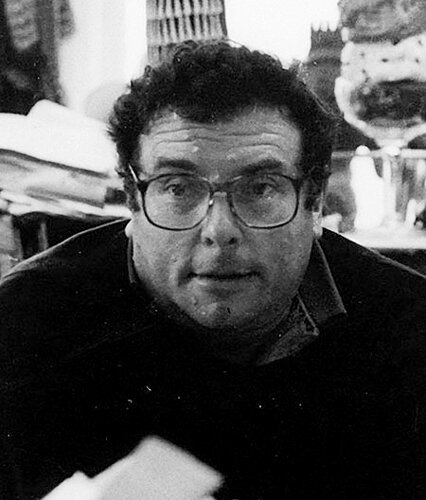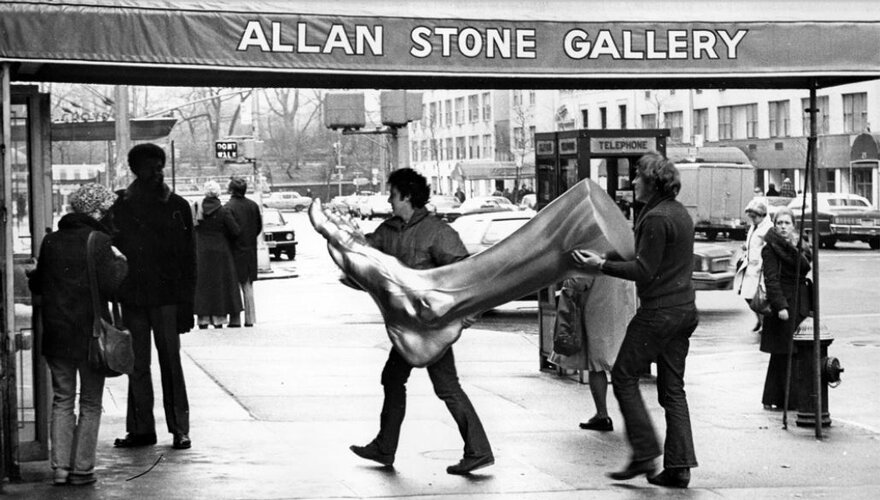543
543
1945
ink on paper 8¾ h × 12 w in (22 × 30 cm)
ink on paper 8¾ h × 12 w in (22 × 30 cm)
estimate: $1,000–1,500
result: $1,375
follow artist
Signed to lower right ‘Graham’.
provenance: Allan Stone Gallery, New York


Founded in 1960 by art dealer Allan Stone (1932–2006), the New York gallery known today as Allan Stone Projects has been admired for over half a century. Celebrated for its eclectic approach and early advocacy of pivotal artists of the 20th century, Allan Stone Gallery was a leading authority on Abstract Expressionism, the New York dealer for Wayne Thiebaud for over forty years, and showed the works of Willem de Kooning, Franz Kline, Arshile Gorky, Joseph Cornell, John Graham and John Chamberlain. Stone also promoted the work of a younger generation of artists that were in conversation with other artists in his collection, working in the mediums of assemblage, collage and new modes of abstraction. In addition to modern masterworks and contemporary art, Allan Stone also collected and exhibited international folk art, Americana and important decorative arts and industrial design.


Abstract painting is the highest and most difficult form of painting because it requires of the artist the ability to take full stock of reality and the ability to make a departure from it.
John Graham
John Graham 1886–1961
John Graham's development exemplifies the early twentieth-century shift in artistic focus from Europe to the United States. Born Ivan Dambrowski in Kiev (then Czarist Russia, now Ukraine), he studied law and served as a cavalry officer for the Czar in World War I, until the Bolsheviks imprisoned him in 1918. The artist's own accounts of his departure from Russia were conflicting, but after either escaping or being released, Graham made his way to New York City via Paris in 1920. He matriculated at the Art Students League and befriended fellow classmates Adolph Gottlieb, Barnett Newman, Alexander Calder, and Elinor Gibson, while studying under the direction of John Sloan.
Throughout his life and in death, Graham has been exhibited widely, with notable recent exhibitions including a retrospective organized by the Phillips Collection in Washington, D.C., John Graham: Artist as Avatar (1987-1988), and a New York retrospective at Allan Stone Gallery, John Graham: Sum Qui Sum (2005). The artist’s works are found in numerous important collections, such as the Art Institute of Chicago, the Museum of Modern Art and the Whitney Museum of American Art in New York, the San Francisco Museum of Modern Art, Yale University Art Gallery, and the Phillips Collection. Graham relocated to London in 1961 where he died.
During the 1930s while Regionalism and Social Realism reined in America, Graham's expertise in Surrealism and Cubism canonized him for a new generation of American Modernists, including Willem de Kooning, Arshile Gorky, David Smith, and Franz Kline, among others. Graham introduced them to the significance of the unconscious mind as a source of inspiration and thus contributed to the earliest developments of Abstract Expressionism. In 1942, he organized a show for the McMillen Gallery that featured works by Stuart Davis, David Burliuk, Willem de Kooning, Lee Krasner, Jackson Pollock, and himself across from works by Pablo Picasso, Georges Braque, and Henri Matisse.
Graham rarely painted in any one style, choosing rather to let his intuitive impulses guide him from one theme to another. He studied mysticism and closely followed Freudian and Jungian psychology as they developed. Graham's eclectic impulses grew by the early 1940s as he incorporated not only elements of Cubism and Surrealism, but also Tribal art, of which he was an avid collector. The broad spectrum of cultural and symbolic references in Graham's work points to his spiritually unifying tendencies, and resonates with renowned art curator Eleanor Green's characterization of the artist as an "avatar."
Upcoming Lots John Graham
Auction Results John Graham